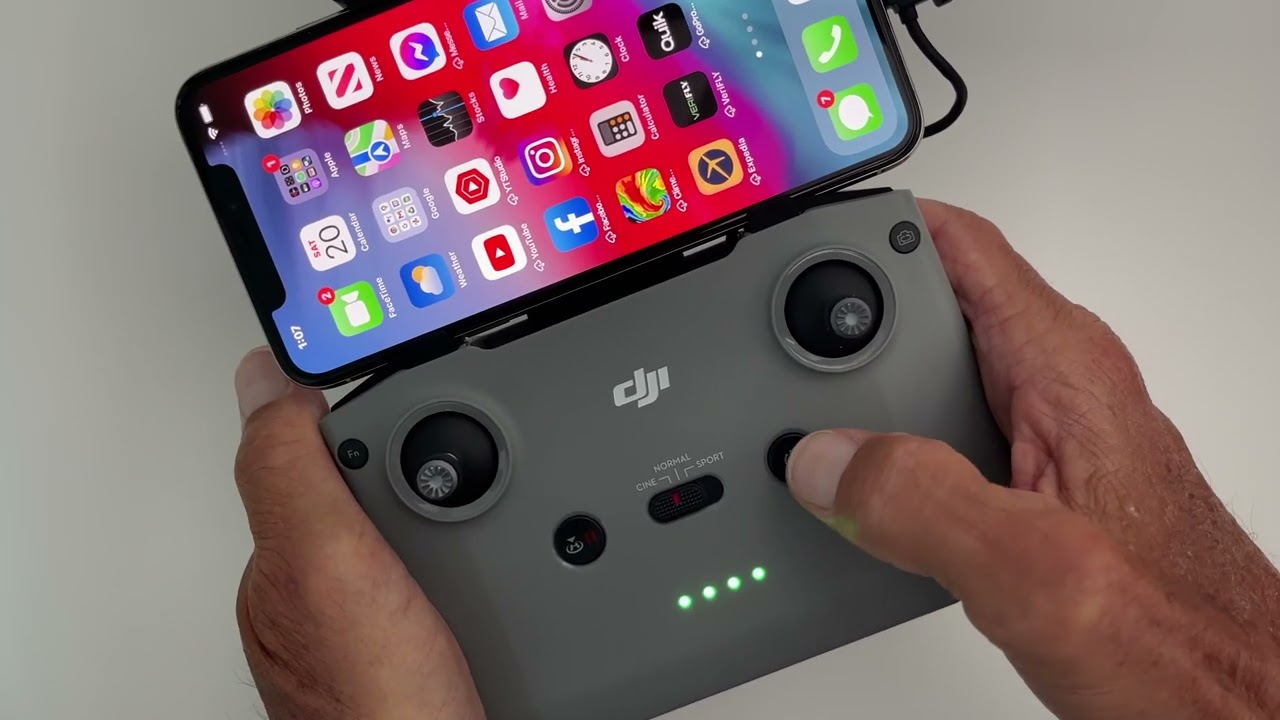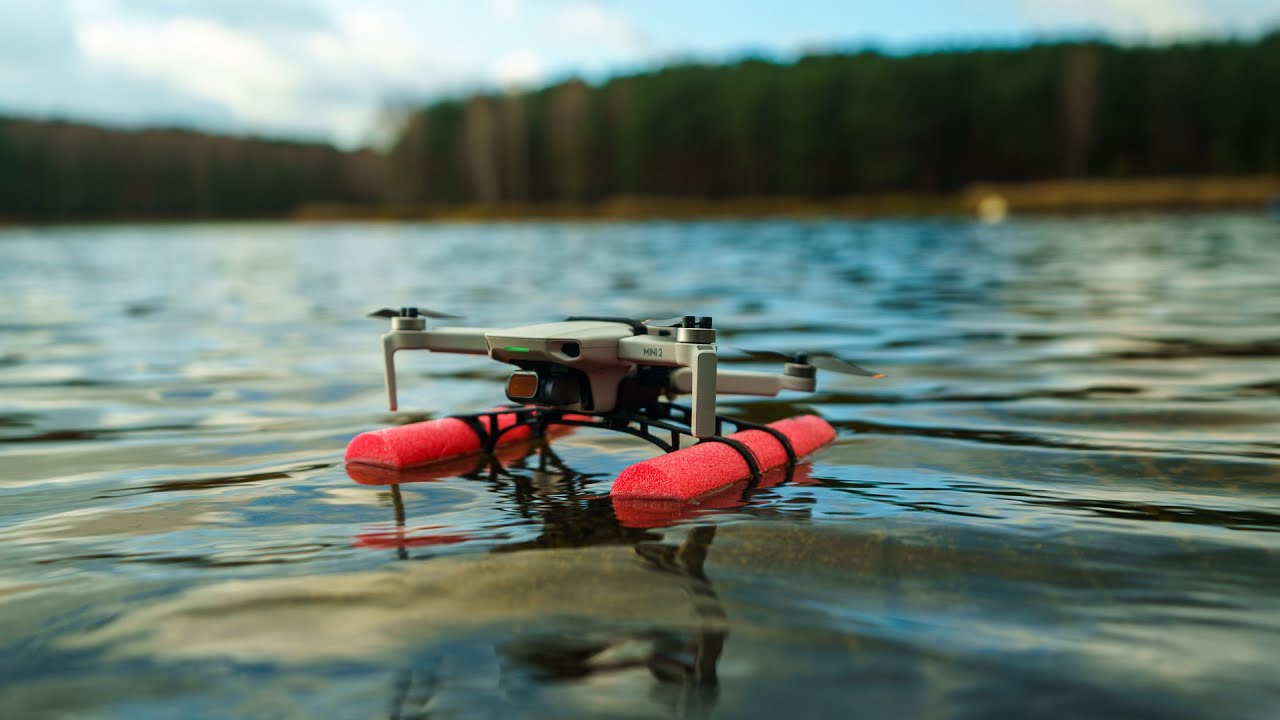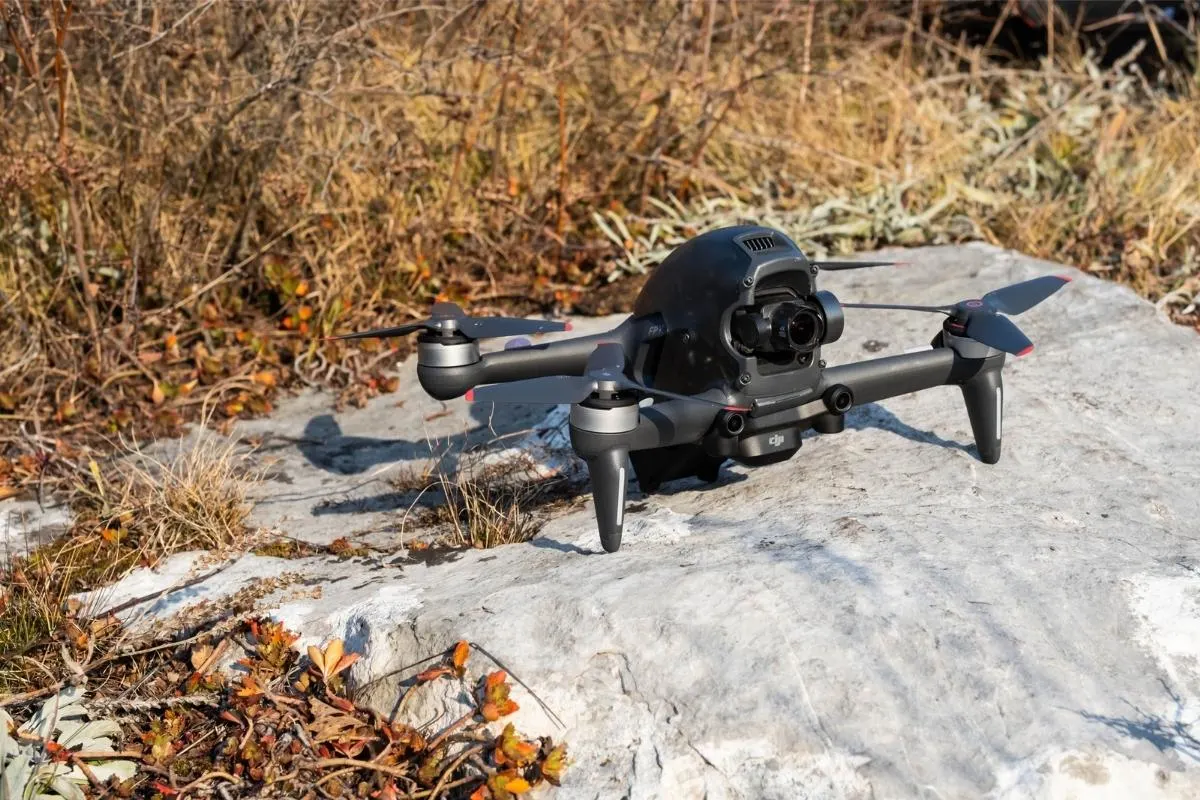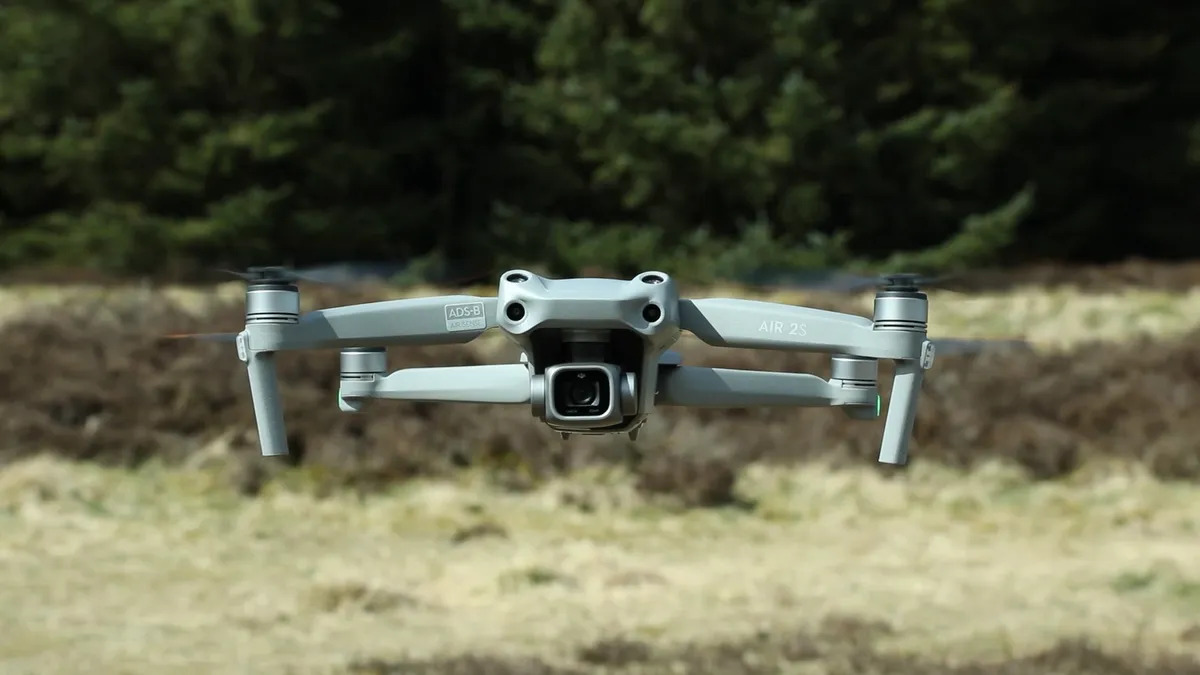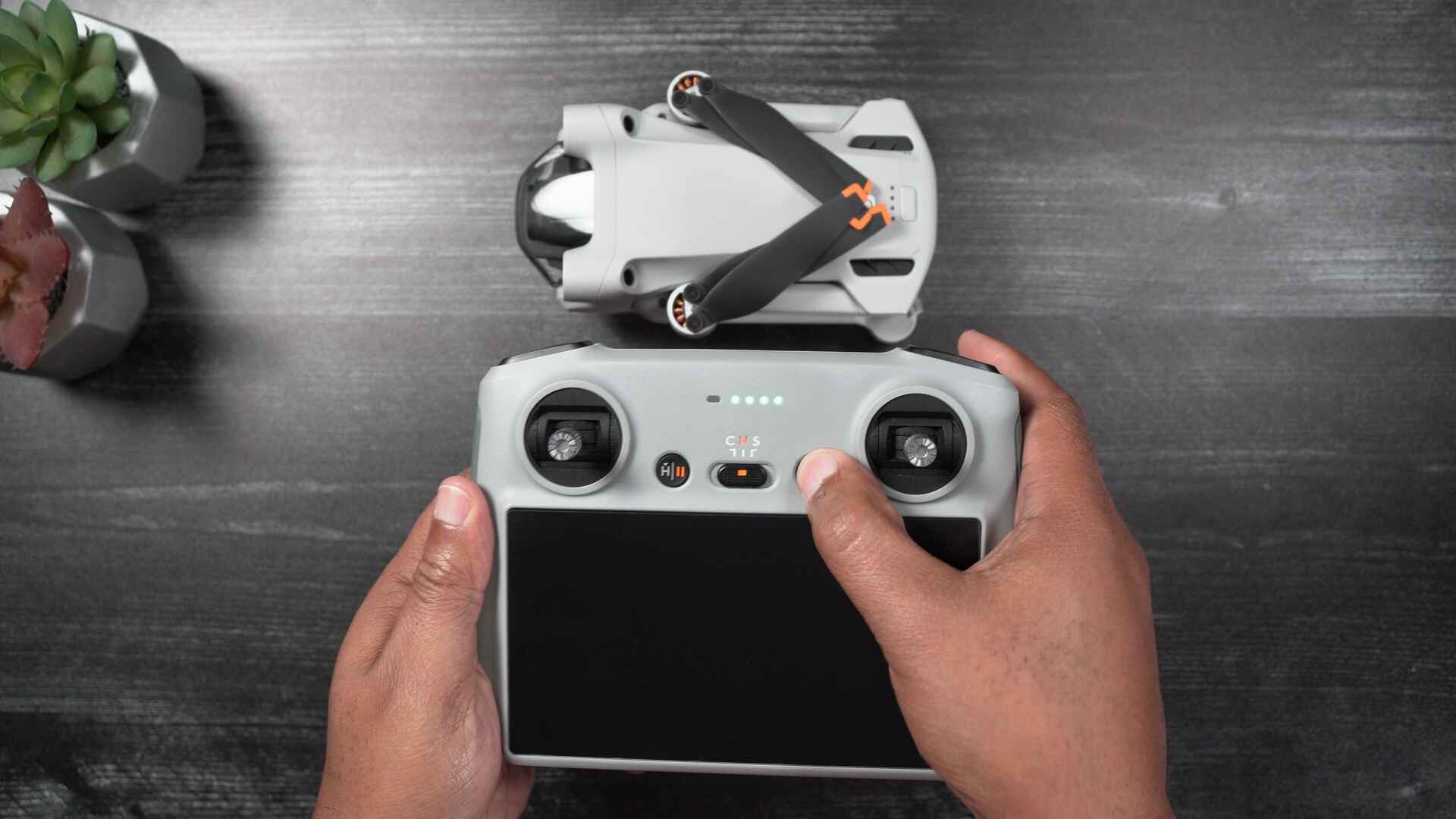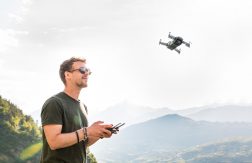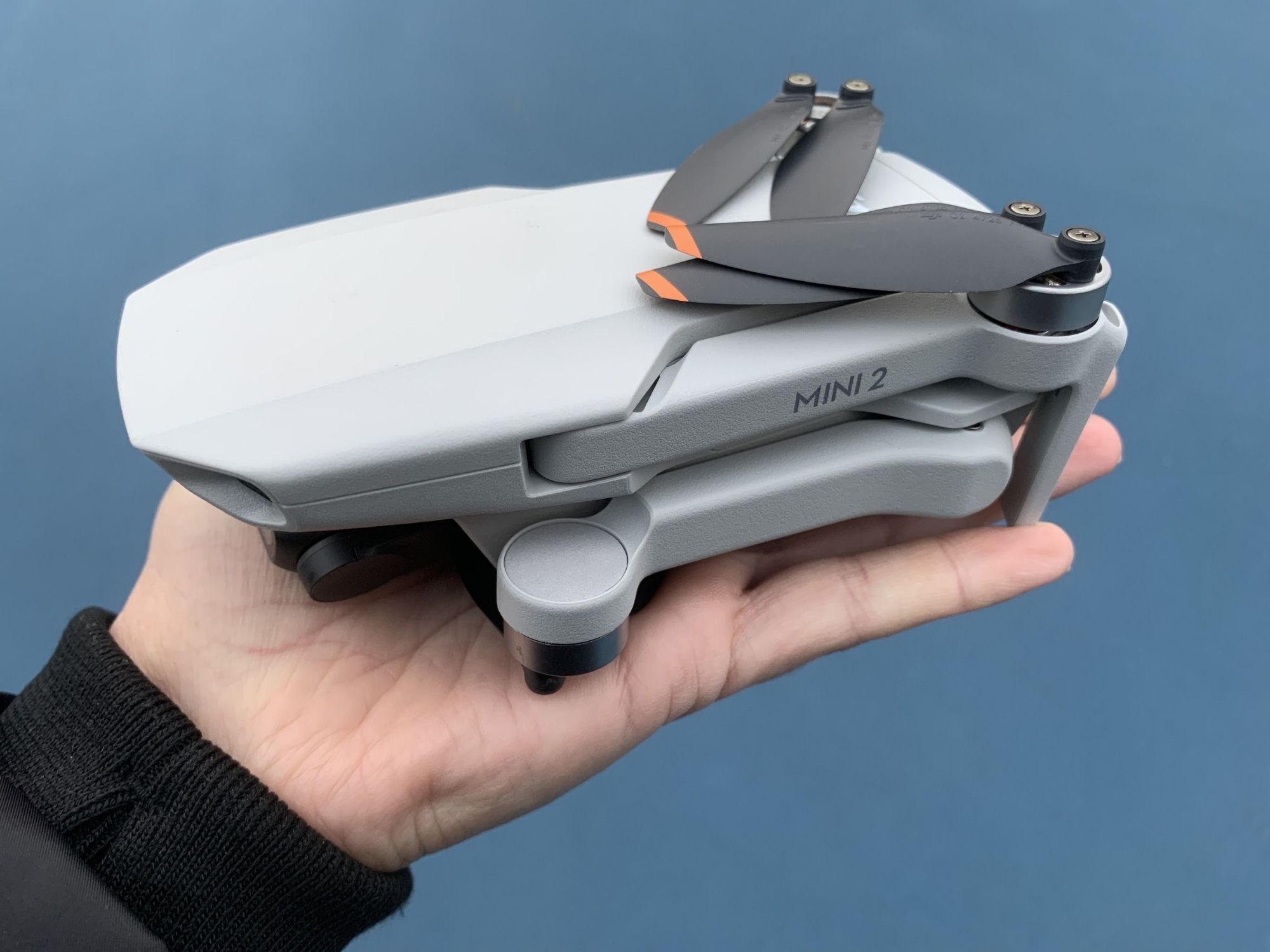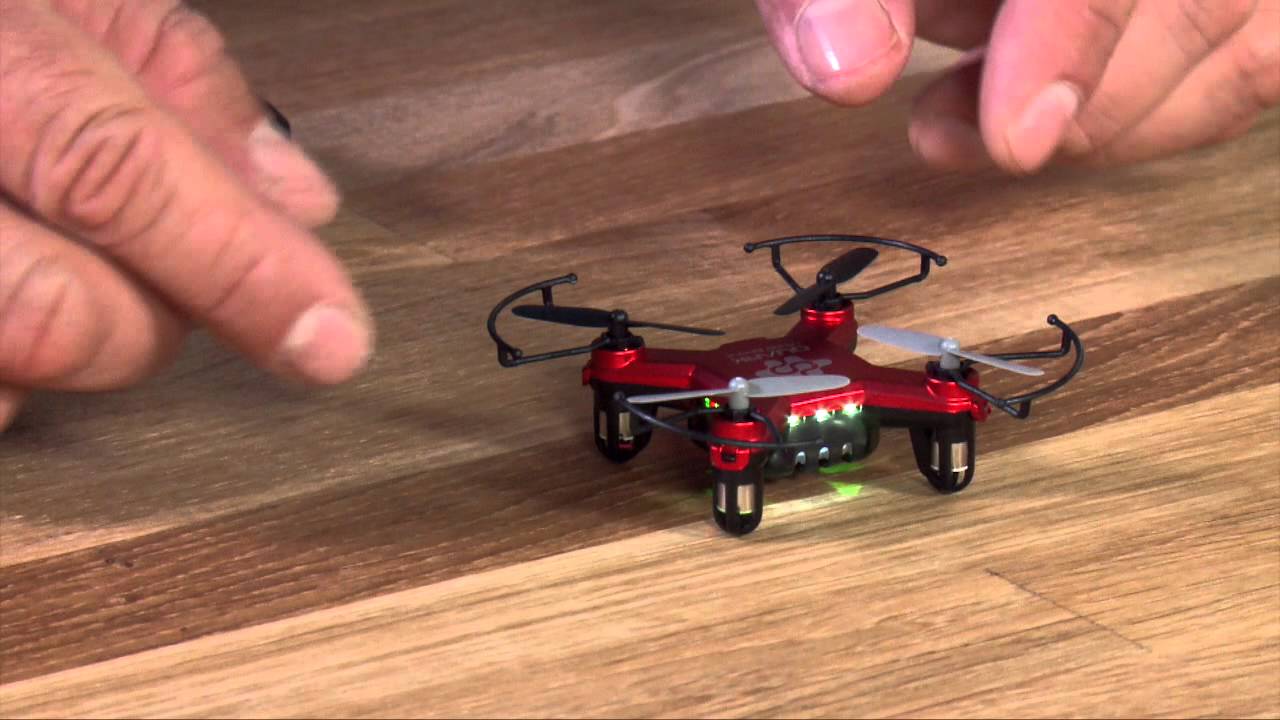Introduction
Welcome to the exciting world of drone piloting! As a drone enthusiast, one of the most crucial skills you need to master is landing your drone. A smooth and controlled landing ensures the safety of your drone and prevents any potential damage. Whether you’re a beginner or an experienced pilot, knowing how to land a drone properly is essential for a successful flight.
In this article, we’ll guide you through the process of landing a drone safely and effectively. We’ll cover everything from choosing the right landing spot to understanding landing regulations and mastering various landing techniques. By the end of this guide, you’ll have the knowledge and confidence to land your drone like a pro.
Before we dive into the details, it’s important to note that landing a drone requires careful planning and execution. It’s not as simple as just bringing it down to the ground. Factors such as weather conditions, landing regulations, and drone maintenance all play a crucial role in ensuring a successful landing.
So, whether you’re preparing for your first landing or looking to improve your landing skills, let’s explore the essentials of how to land a drone.
Choosing the Right Landing Spot
When it comes to landing your drone, selecting the appropriate landing spot is paramount. By considering a few essential factors, you can ensure a safe and smooth landing. Here are some guidelines to help you choose the right landing spot:
- Open Area: Look for a spacious and open area that provides enough room for your drone to descend and land. Avoid landing in congested areas or near obstacles such as trees, buildings, or power lines.
- Flat Surface: Find a level and stable surface for landing, such as a grassy field or a paved area. Uneven surfaces may lead to unstable landings, potentially causing damage to your drone.
- Clear Visibility: Ensure good visibility of your landing spot to avoid any potential obstructions. Avoid areas with poor lighting or low visibility to maintain full control over your drone during landing.
- Away from Interference: Choose a spot away from electromagnetic interference sources, such as power stations or high-frequency devices. These interference sources can disrupt the communication between your drone and the remote controller, leading to unstable landings.
- Legal Considerations: Familiarize yourself with local regulations and restrictions concerning drone flights and landings. Some areas may have specific landing zones or restricted airspace where drones are prohibited from landing. Adhering to these rules ensures a responsible and legal landing.
By carefully selecting the right landing spot, you minimize the risks of mid-air collisions, crashes, or damage to your drone. Remember to evaluate each landing spot for its suitability and assess any potential hazards that may affect your landing.
Understanding Landing Regulations
When it comes to drone landing, it’s important to be aware of and comply with the applicable landing regulations in your area. These regulations are put in place to ensure the safety of both the drone operator and the general public. Here are some key points to consider when it comes to landing regulations:
- Local Laws and Regulations: Research and understand the local laws and regulations related to drone operations in your area. Different countries and regions may have specific rules regarding where and how drones can be landed. Ensure that you are familiar with these laws and follow them accordingly.
- Restricted Airspace: Some areas, such as airports, military bases, and national parks, have restricted airspace where drone flights and landings are prohibited or highly restricted. Make sure to check the designated no-fly zones in your area to avoid any legal issues or endangering aircraft operations.
- Special Permit Requirements: In certain cases, you might need special permits or authorization to perform drone landings in specific locations. This could include areas with historical significance or private property. Check with the appropriate authorities to ensure you have the necessary permissions.
- Privacy Concerns: Keep in mind that drones equipped with cameras raise privacy concerns. Respect the privacy of people around you and avoid landing in areas where individuals may have a reasonable expectation of privacy, such as private properties or public restrooms.
Being aware of and abiding by landing regulations is not only essential to avoid legal repercussions but also to maintain a positive image of responsible drone piloting. It promotes safety and helps safeguard the future of recreational and commercial drone operations.
Preparing Your Drone for Landing
Before initiating the landing process, it’s crucial to ensure that your drone is properly prepared for a safe and successful landing. Here are some important steps to follow when getting your drone ready for landing:
- Battery Check: Monitor your drone’s battery level during the flight to ensure that you have enough power remaining for landing. Most drones have automatic low battery warnings that alert you when it’s time to initiate the landing process.
- Return-to-Home (RTH) Function: If your drone has a Return-to-Home feature, make sure it is enabled and properly configured. This function automatically brings your drone back to its takeoff location and initiates the landing process if the battery is critically low or the signal is lost.
- Obstacle Avoidance Systems: If your drone is equipped with obstacle avoidance sensors, ensure that they are enabled and functioning correctly. These sensors help detect and avoid any obstacles during landing, providing an extra layer of safety.
- Stable Hovering: Before initiating the landing process, ensure that your drone is stable and hovering in a controlled manner. Make any necessary adjustments to maintain a consistent altitude and position.
- Camera and Gimbal Positioning: If your drone has a camera and gimbal, adjust their positions to face forward or upward to avoid potential damage during landing. Securely lock them in place to prevent any unnecessary movement or vibrations.
- Weather Conditions: Take into account the current weather conditions before initiating the landing process. Strong winds, rain, or gusty conditions can affect the stability and control of your drone during landing. Ensure that you have optimal weather conditions for a safe landing.
By following these steps, you’ll ensure that your drone is in optimal condition and ready for a smooth and controlled landing. Taking the time to properly prepare your drone can significantly reduce the risk of accidents and damage during the landing process.
Manual Landing Technique
Mastering the manual landing technique is essential for a drone pilot. This technique allows you to have full control over the landing process, ensuring a safe and precise touchdown. Here are the steps to follow when performing a manual drone landing:
- Choose a Target: Identify a specific spot on the ground where you want your drone to land. This can be a marked landing pad or a designated area that you’ve chosen beforehand.
- Descend Slowly: Begin descending your drone slowly towards the landing spot while maintaining a controlled descent speed. Gradually reduce the altitude to ensure a smooth transition from hovering to landing.
- Monitor Altitude: Keep a close eye on the altitude readings and ensure that your drone maintains a consistent descent rate. Avoid descending too quickly, as this can lead to a hard landing or potential damage to the drone.
- Adjust Hovering: As your drone gets closer to the ground, adjust the throttle to maintain a stable hover a few inches above the landing spot. This allows for a controlled landing and minimizes any potential ground effects that can affect the stability of the drone.
- Slowly Touch Down: Gradually decrease the throttle and allow your drone to gently touch down on the landing spot. Aim for a smooth touchdown without any sudden movements or impacts.
- Power Down: Once your drone has safely landed, power down the motors to fully secure it. Double-check that the drone is securely on the ground before turning off the power.
It’s important to practice manual landings in various conditions to build your skills and confidence. Each landing may bring unique challenges like wind gusts or uneven surfaces. By practicing regularly, you’ll become proficient in controlling your drone during the landing process.
Automatic Landing Techniques
Many modern drones are equipped with advanced features that enable automatic landing. These features provide convenience and precision, especially in complex or challenging landing scenarios. Here are some common automatic landing techniques that you can utilize:
- Return-to-Home (RTH): The Return-to-Home function is a popular automatic landing feature found in most consumer drones. When activated, the drone will autonomously navigate back to its takeoff location and initiate the landing sequence. This is particularly helpful when you lose sight of your drone or when the battery is critically low.
- Precision Landing: Precision landing is a feature that enables your drone to land precisely on a predetermined spot using its onboard sensors. By utilizing GPS, visual sensors, or optical flow technology, the drone can analyze the landing area and autonomously adjust its position, ensuring a pinpoint landing.
- Automatic Landing Modes: Some drones offer specific landing modes that allow for automatic or assisted landings. These modes can vary based on the drone model and may include features such as auto-landing with obstacle avoidance, auto-landing in windy conditions, or auto-landing on moving platforms.
It’s important to thoroughly read and understand the user manual for your specific drone to learn how to activate and use the automatic landing features. While these features provide convenience, it’s still essential to monitor the landing process and be prepared to take manual control if necessary.
Keep in mind that automatic landing techniques may not be suitable or available in all situations. Factors like GPS signal strength, environmental conditions, and battery levels may affect the performance of these features. Always assess the situation and, if needed, opt for manual landing to ensure the safety and integrity of your drone.
Landing in Windy Conditions
Landing a drone in windy conditions requires extra caution and precise control to ensure a safe and stable landing. Wind can significantly impact the stability and control of your drone during the landing process. Here are some tips to successfully land your drone in windy conditions:
- Assess Wind Speed: Determine the wind speed and direction before attempting to land your drone. Ideally, you should avoid landing in strong wind conditions that exceed the recommended limits specified in your drone’s user manual.
- Choose a Sheltered Landing Spot: Look for a location that provides some natural wind protection, such as behind a building, trees, or other structures. These barriers can help reduce the wind’s effect on your drone during the landing process.
- Adjust Landing Approach: Modify your landing approach to make it more resistant to crosswinds. Align your drone with the wind direction to minimize the sideways drift caused by the wind.
- Decrease Descent Speed: Slow down the descent speed of your drone to compensate for the wind and maintain stability during landing. Avoid abrupt or sudden movements, as they can be exacerbated by the wind and lead to an unstable landing.
- Continuous Control: Keep a firm grip on the controls and be prepared to make necessary adjustments throughout the landing process. Use small, smooth control inputs to counteract any drift or sudden gusts of wind.
- Smooth Touchdown: As your drone approaches the landing spot, gently reduce the throttle to ensure a smooth and controlled touchdown. Aim for a soft landing to prevent any damage to your drone.
It’s crucial to practice landing in windy conditions in a controlled environment to build your skills and confidence. Gradually increase the wind speed and challenge yourself to maintain stability during the landing process. This will help you become more proficient in handling windy conditions and ensure a safe landing every time.
Emergency Landing Procedures
Even with careful planning and preparation, unexpected emergencies can arise during a drone flight that require immediate action for landing. It’s important to be familiar with emergency landing procedures to mitigate any potential risks. Here are some steps to follow in the event of an emergency landing:
- Stay Calm: Maintain composure and stay focused during the emergency situation. Panicking can lead to hasty decisions and further complications.
- Assess the Situation: Quickly evaluate the severity of the emergency and identify any potential hazards or obstacles that may affect the landing process.
- Activate Return-to-Home: If your drone has a Return-to-Home (RTH) feature, activate it immediately to initiate the automated landing process. This can be done through the remote controller or using the dedicated RTH button on the drone.
- Select a Safe Landing Spot: If the RTH function is not available or viable, manually choose a safe landing spot. Consider factors such as open areas, clear visibility, and minimal obstacles.
- Descend Gently: Gradually decrease the drone’s altitude while maintaining control. Avoid sudden or aggressive movements that can jeopardize stability and cause damage.
- Power Down: Once your drone has safely landed, power down the motors to prevent any unintended movement or potential damage.
It’s essential to prioritize safety during an emergency landing. Do not attempt risky maneuvers or put yourself or others in danger while attempting to recover your drone. Take time to assess the situation and make the best decision based on the available options.
After an emergency landing, carefully inspect your drone for any damage and ensure that it is in working order before attempting to fly it again. If necessary, seek professional assistance for repairs or maintenance.
Remember, emergency situations are unpredictable, but being prepared and having a clear understanding of emergency landing procedures can help minimize potential risks and ensure the safety of your drone and those around you.
Avoiding Common Landing Mistakes
Landing a drone can sometimes be challenging, even for experienced pilots. It’s important to be aware of common landing mistakes to avoid potential accidents and damage to your drone. Here are some common landing mistakes to watch out for and tips to help you avoid them:
- Lack of Preparation: Failing to adequately prepare for landing can lead to mistakes. Always ensure that your drone is in good condition, the battery is sufficiently charged, and you have a safe landing spot identified.
- Descending too Fast: Descending too quickly can result in a hard landing or even damage to your drone. Take your time to carefully control the descent speed and prioritize a smooth touchdown.
- Failure to Consider Wind: Neglecting to assess the wind conditions can lead to instability during landing. Always take the wind into account and make necessary adjustments to maintain control.
- Choosing a Poor Landing Spot: Selecting an improper landing spot, such as an uneven surface or an area with obstacles, increases the risk of a rough landing. Choose a level and obstacle-free area for a safer touchdown.
- Overreliance on Automatic Landing: While automatic landing features can be convenient, it’s important not to solely rely on them. Be prepared to take over manual control if the automatic landing does not proceed as planned.
- Ignoring Battery Level: Neglecting to monitor the battery level during landing can result in an unexpected and sudden loss of power. Always keep an eye on the battery level and initiate the landing process before it gets critically low.
- Poor Hovering Control: Inaccurate hovering control during the final moments of landing can lead to a rough touchdown or tip-overs. Continuously adjust throttle inputs to maintain a stable hover and achieve a controlled landing.
By being mindful of these common landing mistakes, you can significantly reduce the risk of accidents and ensure a smoother landing for your drone. Practice and experience will also help you improve your landing skills over time.
Remember, each landing is an opportunity to learn and enhance your piloting abilities. Take the time to review any mistakes or challenges encountered during the landing process, and use those insights to improve your future landings.
Conclusion
Landing a drone is a crucial skill that every drone pilot needs to master. Proper landing techniques ensure the safety of your drone, prevent damage, and minimize the risk of accidents. By following the guidelines outlined in this article, you’ll be equipped with the knowledge and techniques necessary for successful drone landings.
Remember to choose the right landing spot, taking into consideration factors such as open space, flat surface, visibility, and compliance with landing regulations. Preparing your drone for landing, including checking the battery level, enabling Return-to-Home functions, and adjusting camera and gimbal positions, ensures a smooth landing process.
Manual landing techniques provide you with full control over the landing process, while automatic landing features can offer convenience and precision in certain situations. However, it’s important to remain vigilant and be prepared to take over manual control if necessary. Additionally, landing in windy conditions requires extra caution and adjustment of landing techniques to maintain stability and control.
In the event of an emergency landing, staying calm, activating Return-to-Home or selecting a safe landing spot, and performing a controlled descent are essential steps to ensure a safe outcome. Avoiding common landing mistakes, such as descending too quickly, neglecting wind conditions, or choosing a poor landing spot, significantly reduces the risk of accidents and damage to your drone.
By continuously practicing and refining your landing skills, you’ll become a confident and skilled drone pilot. Each landing is an opportunity to improve and learn from any mistakes encountered. So, stay cautious, be prepared, and enjoy the rewarding experience of successfully landing your drone!









